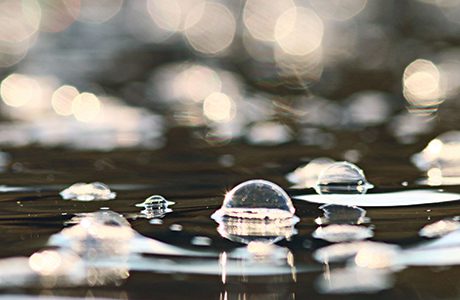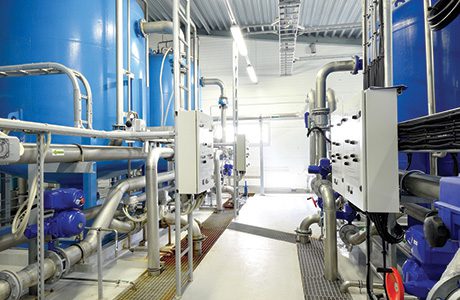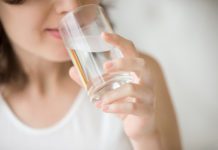
Envirotec takes a look at the methods available for measuring organic loading in a body of water, and things to consider when selecting an instrument.
THERE is no definitive signifier of the presence of organic compounds in waterways and effluent streams. Parameters like biochemical oxygen demand (BOD), chemical oxygen demand (COD) and total organic carbon (TOC) each characterise different aspects of the multi-faceted concept of “organic loading”. The relevance of each varies with the application area. TOC in particular has been in the ascendency in recent years, given the technology’s evolution and its ability to support real-time monitoring and control capabilities.
BOD’s history can be traced to the early days of sewage treatment, with BOD5 having been selected by the Royal Commission on Sewage Disposal in 1908 as the definitive test for organic pollution of rivers (five refers to the number of days required to perform the test). The method provides an indicator of the amount of oxygen required to oxidise the organic compounds present in a sample (producing carbon dioxide and water) – a process which occurs as a result of the activity of microorganisms in a body of water like a river.
The traditional approach to measuring BOD requires several dilutions of a sample and a significant amount of laboratory expertise. And the results it produces can be “horribly inaccurate”, says Andy Hudson of water monitoring specialist Envitech, who says you’d struggle to get an accuracy of more than 30-40% in a multi-laboratory test of BOD measurement (though the repeatability of results obtained in the same lab with the same operator can be much better).
Despite its lack of precision BOD is widely used as an indicator of the levels of organic pollutants in water.

The search for a better alternative to BOD led to the development of measurement techniques for chemical oxygen demand (COD), which have the advantage of using cheap and readily available chemicals (albeit very toxic and unpleasant ones) and can produce a result in around three hours. Its reproducibility is also “extremely good”, says Hudson, being in the region of 1 or 2% (with ± 5% being as much as many applications require).
So COD has many advantages over BOD, although it does use toxic chemicals (in comparison to the green chemistry of BOD). It is also less specific, since it ostensibly measures everything (or many of the things) in the sample that can be chemically oxidized (under the prescribed chemical conditions for the test) rather than just the levels of biologically active organic matter, as with BOD. But the greater propensity of COD tests to oxidise the compounds in the sample provides a better predictor of organic carbon loading.
The sample is added to an oxidising solution (defined by the standards for COD measurement), the resulting mixture is heated to 148ºC ±3ºC for 2 hours. After this period the quantity of remaining oxidant can be measured (via a titrimetric or spectrophotometric measurement) and the oxygen demand of the sample can be calculated.
The method has been used to provide continuous measurement of effluent – to assist with the management of a plant or industrial process, for example. However those in search of something more like real-time measurement have in recent years tended to plump for instruments capable of measuring total organic carbon (TOC).
The move to TOC
Capable of producing results in a few minutes, TOC analysers can also be configured to provide accuracy levels of ±2 or ±3% “quite easily”, according to Hudson. In comparison, he says, COD offers a similar level of accuracy, sometimes a bit more.
On the downside, TOC is not a selective test: It tells you how much organic carbon is present but not anything more than that.
Recent years have seen the emergence of a wide variety of techniques for measuring TOC. And modern instruments can be configured in different ways to optimise the results achievable with a particular target sample.
Currently TOC measurement is often used in pharmaceutical manufacturing, to check on the cleanliness of equipment – a quick swab test of TOC is used here. TOC is also being used in environmental monitoring, to indicate the presence of hazardous contaminants in drinking water.
The mechanism by which the measurement is performed varies. Hudson divides the approaches into three camps: Those in the ambient temperature range (which tend to use aggressive, oxidising chemicals or UV light); those which operate at higher temperatures, typically around 500-700ºC, often also employing a catalyst and/or UV light to break down the organic compounds into CO2; and a third category, which uses a very high temperature of 1,200ºC.
Three types of TOC
The different mechanisms employed in TOC measurement perform differently under different conditions and with different types of organic compound. These application-dependent strengths and weaknesses should be considered when choosing an instrument. In a situation like a water treatment works, where the process under analysis behaves quite steadily without significant variability in environmental factors, you can be confident that “almost whatever TOC machine you use, you’ll get consistent results”, says Hudson. However, another treatment plant or process might be subject to a much greater variability in the conditions present and might be subject to spikes in organic loading levels (i.e. when batch processing is being conducted) and this will require greater care in the choice of TOC machine. The same chemicals that are digested easily by one TOC machine may not be handled well by another.
The Hach Biotector is a TOC instrument that is popular in the UK, and fits into the ambient temperature category of instrument. It employs a Two-Stage Advanced Oxidation (TSAO) technology, said to allow it to cope with samples that may present challenges because they contain lots of fats, sludge or particulate matter.
In the elevated temperature category, Shimadzu’s TOC-L series of analysers employs the firm’s own 680ºC combustion catalytic oxidation method, said to provide an “ultra-wide range” (4µg/L to 30000µg/L). The devices use non-dispersive infrared (NDIR) detection – a method traditionally beset by stability problems with the older generation or “Luft” detectors, but which Shimadzu’s literature says have now been overcome with its next generation NDIR detectors like the TOC-L series.
In the higher temperature category of instrument are the TOC analysers from LAR Process Analysers, which employ no catalysts or reagents as the temperature alone – 1200ºC – is sufficient to break down the carbon-based compounds present in the sample. Hudson suggests this mechanism offers an edge in accuracy terms over other TOC measurement technologies, particularly in samples containing particles or lumps, which are not so easily broken down by reagents or UV. The 1200ºC temperature provides a far more complete breakdown of the organic carbon present, approaching 100%. “No other machine can provide such a guarantee with different types of sample,” he says.
However, he adds that consistency of reading may be all you need in some applications where TOC analysers are used. For example, if there is a need to know if the water characteristics are normal or otherwise, rather than needing to know the absolute TOC value.
Getting the most from TOC
One TOC application requiring a high level of accuracy is in boiler systems. The presence of organic contaminants in boiler feed water has to be carefully monitored because under high temperature conditions such molecules break down into carbon dioxide, leading to the production of carbonic acid, which can attack pipework, according to Hudson.
This is an application requiring a high level of measurement precision, he suggests – down to parts per billion – so the design of the instrumentation is very important. A problem with TOC measurement is the tendency of organic molecules to adsorb or adhere to surfaces. And so the sample handling system has to be designed to cope with this. Envitech has recently produced some application notes offering insight into this problem and how to avoid it.
TOC to replace BOD and COD?
TOC has tended to be used as a complement to measurements of BOD and COD. However more recently it has begun to be presented as a direct replacement, something which is already happening in certain countries, including Japan, Germany and Austria, according to Shimadzu’s Lee Parry, addressing the WWEM conference in November 2014. He suggested we are likely to see this happening increasingly in the UK as well.
Such a move has been driven in part by legislation, such as the EEU’s ban of hexavalent chromium scheduled to come into force in 2017. There are also concerns about the toxicity of mercury, often used in COD measurements to suppress chloride levels, the latter tending to interfere with COD.
A Council of European Communities Directive (91/271/EEC dated May 21, 1991), under requirements for urban water, states that “the BOD parameter can be replaced by another parameter total organic carbon (TOC) if a relationship can be established between BOD and the substitute parameter.”
In the UK, consent permits from bodies such as SEPA and the EA are almost exclusively written in terms of COD, something that looks unlikely to change anytime soon given the difficulty of changing all those consents.
Hudson says at present there is no simple method available to correlate TOC measurements with BOD or COD, although such a correlation might be understood to occur under certain known conditions or at particular times of the year.
It seems that specifying a TOC instrument for an application is not an overly simple matter. When reading company literature, Hudson says, “you need to consider what statements are being made about precision and accuracy”. Each instrument will tend to use a different method for digesting the organic molecules in the sample (to produce CO2), each of which has strengths and weaknesses depending on the application. Vendors will naturally tend to cite the figures which show their own products in the best light.

TOC will no doubt continue to grow in importance, and there are many instruments available from reputable manufacturers which can provide useful information for both monitoring and control purposes. With careful consideration of the sample being analysed, and the practical details of the installation and operation of the instrument, they can provide a good return on investment.
“There is a need to improve environmental and financial performance and TOC analysers can play a part in achieving both,” says Hudson.






